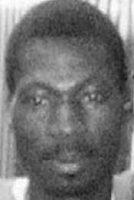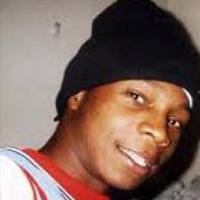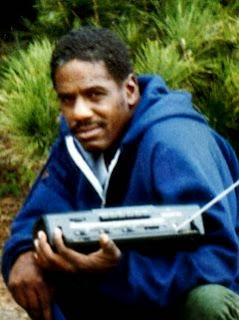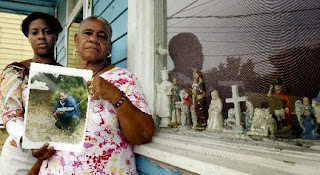Roughly one year after the Diallo shooting, Dorismond and a friend were approached by two undercover NYPD officers asking where they could buy marijuana. Dorismond was offended and became angry saying he was not a drug dealer. The officers state that Dorismond threw a punch at one officer while his friend attacked the other. The officer scuffling with Dorismond yelled “Get his gun” at which point the other officer drew his weapon and identified himself as a cop. Dorismond grabbed at the officer’s gun and it accidentally shot him in the chest. However, Dorismond’s friend says one of the officers was agressive and “in their face” and neither of them ever identified themselves as police officers. He also says that the cops, not Dorismond, threw the first punch. Dorismond died on the scene and neither of the officers were charged. Many felt that the acquittal of Diallo the year before gave license to NYPD to shoot unarmed suspects at will.
This blog stays updated with cases of Police Brutality against Black Men and the Black Community. These are just the cases that we are fortunate enough to hear about. But, there are several "unsung victims" whose story has never been told or videotaped. Infamous cases such as Rodney King and Oscar Grant are not isolated incidents. They exist amongst a corrupt system of impunity. Who am I? I am a “Concerned Member of the Black Community.”
Saturday, September 21, 2013
Ousmane Zongo
In May 2003, police planned a raid on a warehouse known for pirating CDs and DVDs. Zongo used the same warehouse to repair musical instruments and happened to be in the area on the day of the raid. Officer Bryan Conroy, dressed in disguise as a postal worker, was guarding a bin of CDs when Zongo entered the warehouse and turned on the light. Confused by a postal worker aiming a gun at him, Zongo ran and Officer Conroy gave chase. Zongo hit a dead end and Conroy shot Zongo four times, two of them in the back. NYPD admitted Zongo had nothing to do with the counterfeit media and Conroy was found guilty of criminally negligent homicide—five years probation, and no jail time.
Timothy Stansbury Jr.
NYPD Officer Richard S. Neri Jr. was on patrol in Bed-Stuy with a partner in January 2004 on a rooftop of a housing development. With his gun drawn (why? He was just on patrol, not in pursuit of a suspect), Officer Neri decided to continue their patrol of the area and exit the rooftop. When he got to the stairwell, Timothy Stansbury, a resident of the neighboring building, opened the door on his way to the roof. Neri was startled and shot the unarmed teenager. He was charged with manslaughter and criminally negligent homicide, but a grand jury ruled the shooting accidental and Neri went free.
Alonzo Ashley
Alonzo Ashley was at the Denver Zoo with his girlfriend in the summer of 2011. He was told by security officers to stop putting his head in a fountain, when he reacted aggressively. Eight officers were called to the scene and they tasered him to death. All of the officers were cleared of any wrongdoing.
When Police Shoot And Kill Unarmed Men
Last week, Kevin Drum wrote about Johannes Mehserle, the white former transit cop who was convicted of involuntary manslaughter for shooting and killing an unarmed black man, Oscar Grant, who was lying face down and handcuffed. Elizabeth Gettelman covered the post-verdict headlines which focused on looting committed by 49 out-of-town recreational anarchists and detracted from the cause of initially peaceful protests. Incidentally, Mehserle's five-years max sentence, with a chance of added time, is especially confusing considering that last year a California man convicted of growing marijuana was sentenced to a minimum of 10 years in federal prison. But almost more puzzling is how often unarmed men are shot by police officers in this country and the reasons given and accepted for the violence.
After Rodney King was beaten by Los Angeles police officers in 1991, a panel investigating excessive use of force by the LAPD found that officers operated under "an organizational culture that emphasizes crime control over crime prevention and that isolates the police from the communities and the people they serve." As a result, police violence and racism stems from this culture which teaches "to command and confront, not to communicate," the report said.
These findings were echoed in the book Above the Law: Police and the Excessive Use of Force. In it, UC Berkeley law professor Jerome Skolnick and former New York City police officer/Temple University criminal justice professor James Fyfe say that police work is often viewed by those in the force as an us-versus-them war rather than a chance for community-oriented engagement and problem solving. The authors also point to a lack of accountability as one of the reasons why police violence persists. They acknowledge that, yes, police officers are placed in dangerous situations that at times require immediate responses.
But they maintain that that doesn't excuse using more force than is needed to subdue someone, the lack of professional training that leads to such fear-based responses, or treating citizens as enemy combatants. As expected, the Mehserle-Grant case has some people questioning the tactics used by and training given to police officers. A Facebook group calling for the disarmament of BART cops has even emerged in the verdict's wake. Fueling these calls for police reform are several cases in recent years where unarmed civilians have died at the hands of those badged to protect and serve. Here's a rundown, along with a few memorable shootings from the past decade or so:
1999: "It looks like one guy may have panicked and the rest followed suit," a police official told The New York Times after the fatal shooting of 22-year-old Amadou Ahmed Diallo, a Guinnea-Bissau immigrant who was killed when four white New York police officers in plain clothes fired 41 shots at him, 19 of which hit his body. The officers said they thought Diallo was reaching for a gun when they shot him in the doorway of his apartment. Turns out it was his wallet. During the trial, the officers admitted that they never considered the situation (four strangers in an unmarked car with guns approaching a guy on his stoop at night) from Diallo's point of view. They were acquitted of all charges.
2003: While surrendering on his knees in front of four Las Vegas police officers, Orlando Barlow is shot with an assault rifle by officer Brian Hartman from 50 feet away. Hartman argued that he feared Barlow was feigning surrender and about to grab a gun. Barlow was unarmed; a jury ruled the fatal shooting was "excusable." Hartman later resigned from the force a month before a federal probe uncovered that he and other officers printed T-Shirts labeled "BDRT" which stood for "Baby's Daddy Removal Team" and "Big Dogs Run Together." The probe also found that Hartman and other officers had used excessive force during two separate investigations and lied about it. Their punishment: the possibility of losing their jobs, The Las Vegas Sun reports.
2006: Just hours before his wedding, 23-year-old Sean Bell leaves the strip club hosting his bachelor party, jumps into a car with two friends, and is killed when police fire 50 shots into his vehicle, wounding his friends. Police say they opened fire after Bell rammed his car into an unmarked police van filled with plainclothes officers. They say they followed Bell and his friends outside the club suspecting that one person in their group had a gun. Referring to Bell and his friends, Mayor Bloomberg told the Associated Press "there is no evidence that they did anything wrong." A judge acquitted the officers of all charges in 2008. A federal civil rights claim filed by Bell's widow is set for this month.
2009: On New Years morning, three Bay Area Rapid Transit officers pull 22-year-old Oscar Grant and four other black men off a train in Oakland. You can view what happened afterwards in this Youtube video. In it, now former-transit officer Mehserle can be seen shooting Grant in the back. During the trial, Mehserle argued that he thought Grant was reaching for a gun near his waistband. To stop this from happening, Mehserle said he intended to Tase him, but shot him with a pistol instead. A judge will deliver his sentence in August. And the US Department of Justice is investigating the case.
2010
January 29: Portland police officers get a call to check on a suicidal and armed man at an apartment complex. Aaron Campbell, 25, comes out of the apartment walking backward toward police with his hands over his head. The Oregonian reports that police say Campbell ignored their orders to put his hands up. At which point one officer fired six bean bag shots at his back. Witnesses say they saw Campbell reach his arm around his back, where the beanbag struck him. Officer Ronald Frashour says he saw Campbell reach both hands around his waistband to get a gun, and so he shot Campbell in the back with an assault rifle. "We feel that his death resulted from flawed police policies, incomplete or inappropriate training, incomplete communication and other issues with the police effort,'' a jury wrote after charging the police officer with no criminal wrongdoing.
January 10: Porterville, Calif. police officers shoot and kill Victor Steen after stopping him for a traffic violation he committed while riding his bike. Officers say they struggled with Sheen, Tasing him, and chasing him to his mother's house where they broke down the door and the altercation continued, until they shot him. The officers were cleared of any wrongdoing.
March 20: After hearing a loud sound, Los Angeles police officers Allan Corrales and George Diego turn their marked car around and see Steven Eugene Washington, 27, walking down the street while looking around and touching something near his waist. The officers say something to Washington. He then approaches them while seemingly removing something from his waistband. Thinking Washington is armed, they fire. One bullet strikes Washington in the head, killing him. Soon afterward, his family announce that Washington was autistic, had learning disabilities, and was generally afraid of strangers. His mom filed a claim for damages with no word yet on whether a lawsuit will follow. The officers have not been charged with a crime.
June 5: Tyrone Brown, a 32-year-old former Marine from East Baltimore, is shot 12 times in a crowded bar after an off-duty Baltimore police officer fires 13 rounds at him for groping one of the officer's lady friend's. That officer, Gahiji Tshamba, was indicted for murder yesterday and faces a maximum life in prison charge if convicted. His attorney had argued that Tshamba "did what he had to do."
Know of other recent or seminal cases? Feel free to add them in the comments section below.
Aiyana Jones (Update): Police Raid that Killed Child Was "Flawed," Says Lawyer; Filming for TV Got Officers "Excited"
DETROIT (CBS/AP) A lawyer for the family of 7-year-old Aiyana Jones, who was shot and killed during a police raid at their Detroit home Sunday morning, believes the police operation was flawed and heavily influenced by camera crews who were filming the raid for A&E's crime show "The First 48," according to a published report.
Aiyana was fatally shot early Sunday morning during a raid targeting a homicide suspect, when police say an officer's gun discharged and struck the sleeping girl in the neck.
Detroit police spokesman John Roach confirms that the raid and attempted arrest of a homicide suspect at the two-unit house was being videotaped for an episode of the reality crime-show "The First 48." Roach said investigators are going through the footage to determine what happened, reports The Detroit News.
The Assistant Chief of the Detroit Police Ralph Godbee would not comment on newspaper reports that neighbors told police there were children in the house and showed them toys in the front yard before they threw a flash grenade through the window of the house.
Apparently, the 34-year-old murder suspect the Detroit police were searching for shares the home with Charles Jones, Aiyana's father. However, according to Oak Park attorney Karri Mitchell,"There was nothing but innocent people in the home where they put this flash grenade."
Even though a no-knock search warrant allowed police to search both apartments, Mitchell told The Detroit News the police "were excited; they were on TV...They didn't have to throw a grenade through the front window when they knew there were children in there."
"We're not indicating the officer's actions were intentional," Mitchell told The Detroit News. "We know it was an accident, but the method that they used in executing the search warrant was flawed. The family understands that the officer is not a monster. He didn't intentionally shoot a 7-year-old girl."
Federal appeals court upholds guilty verdicts, sentences for 2 NOPD officers in Robair beating death
New Orleans police officers Melvin Williams, left, and Dean Moore
A federal appeals court on Monday upheld the convictions and sentences of two former New Orleans police officers over the fatal beating of a 48-year-old handyman. A three-judge panel from the 5th U.S. Circuit Court of Appeals ruled there was sufficient evidence to support a jury's April 2011 convictions of the former officers, Melvin Williams and Matthew Dean Moore.
Williams was sentenced to more than 21 years in prison for fatally kicking Raymond Robair and beating him with a baton during a July 2005 encounter in Treme. Moore, who wasn't charged with having a role in Robair's death, was sentenced to more than five years in prison for submitting a false report and lying to the FBI.
The case is one of several Justice Department probes of alleged misconduct by New Orleans police officers. Most focused on cases that occurred during Hurricane Katrina's chaotic aftermath. Robair died less than a month before the August 2005 storm's landfall.
Prosecutors said Williams broke four of Robair's ribs and crushed his spleen before the officers drove him to a hospital, where he died of massive internal bleeding. Williams' attorney, Reagan Wynn, argued there wasn't sufficient evidence to prove Williams inflicted Robair's fatal injuries.
The 5th Circuit panel, however, said even a defense expert testified that the spleen injury could have been caused by a hard kick.
"While the jury certainly could have reached a different conclusion, these arguments ignore the evidence in the record that supports the jury's verdict," Judge W. Eugene Davis wrote.
Williams denied kicking or hitting Robair, claiming he slipped and fell on a curb as the officers approached. But jurors heard from residents who said they witnessed the beating.
Deborah Pearce, one of Moore's attorneys, argued during a hearing in December that those "incredible" eyewitness accounts conflicted with each other and with the medical evidence in the case.
The 5th Circuit's ruling says jurors were "free to choose among reasonable constructions of the evidence."
"The fact that both medical evidence and eyewitness testimony are conflicting does not preclude a finding of guilt by a jury who has the task of deciding which evidence to credit," Davis wrote.
Wynn also argued that U.S. District Judge Eldon Fallon erred in sentencing Williams based on a finding he committed voluntary manslaughter. Wynn said the trial evidence at most supported a finding of involuntary manslaughter. The 5th Circuit, however, ruled that the record supports Fallon's finding that Williams "acted with an intent to do bodily harm."
The officers' attorneys tried to shift the blame for Robair's death to doctors who treated him for a heart attack for about 90 minutes before they discovered his spleen had ruptured. They say hospital records show Robair arrived at Charity Hospital with a single fractured rib and wasn't bleeding internally.
Moore was a rookie and Williams, a 16-year department veteran, was his training officer at the time of the deadly encounter.
"I Am Troy Davis": Supporters, Family of Georgian Man Executed in 2011 Push To End Death Penalty Parts 1-3
Part 1
Part 2
Part 3
Two years ago on Sept. 21, 2011, the state of Georgia executed Troy Anthony Davis. The execution took place despite major doubts about evidence used to convict Davis of killing police officer Mark MacPhail, including the recantation of seven of the nine non-police witnesses.
"The fight is not over, it's actually just beginning and we still have a long way to go," says Troy Davis' sister, Kimberly Davis, of the family's battle to prove his innocence and to abolish the death penalty nationally.
We also speak to outgoing NAACP president Benjamin Jealous and Jen Marlowe, co-author of the new book, "I Am Troy Davis" with Troy's oldest sister Martina Davis-Correia, who died in December 2011 after a decade-long battle with breast cancer. In addition to the discussion, we air footage from the Democracy Now! special broadcast the night of the execution and from his funeral.
Watch the full interview, and all of our reports on the Troy Davis case at http://www.democracynow.org/topics/troy_davis
Joe Lhota plans to use Terror and Fear to continue Stop and Frisk if elected Mayor of NYC !
Joe Lhota, like Michael Bloomberg and the rest of his cohorts, is basically saying if police don't continue to threaten, terrorize, summons and falsely arrest innocent blacks and Latinos with their Stop and Frisk program then crime will go up and people will die.
This is the type of fear mongering these racist politicians are using to get New Yorkers to go along with an unconstitutional policy that targets innocent men of color so they can be extorted in courts and herded into corporate owned prisons for profit.
If you want to know the truth about stop and frisk then watch this video that I put together myself, I am sure it will shock you !
A compilation of news segments and video clips detailing the history of stop and frisk from beginning to end the way I see it.
Stephen Lawrence's Mother Doreen Attacks Original Police Investigation Into Son's Murder
Gary Dobson and David Norris have been found guilty of the murder of teenager Stephen Lawrence in 1993.
Mr Lawrence, 18, was killed in a racist attack by a gang of youths in Eltham, southeast London, 19 years ago.
The trial into the black A-level student's murder began at the Old Bailey on November 14 last year.
There had been total silence in court as the foreman of the jury said "guilty" when asked if the four women and eight men had reached verdicts on the murder charge.
Mr Lawrence's parents Doreen and Neville wept as the verdicts were delivered.
Doreen Lawrence has fought hard for justice for her family
Doreen, speaking outside court, attacked the original police investigation and said she did not regard the verdicts as cause for celebration.
TRUTH REVEALED: Marlon Brown Dash-Cam (Run Over By Cop)
Marlin Brown, a known felon, led multiple officers on a chase, however it was Officer James Harris that went around other officers, running Brown over to his death.
Full story at: http://ocalapost.com/marlon-brown-dash-cam-release-run/
DeLand, Florida — DeLand Police Officer James Harris was fired from his job after he accidentally ran over Marlon Robert Brown as he was fleeing from officers. FHP spokesperson Sgt. Kim Montes says 38-year old Marlon Robert Brown “failed to stop” for a Volusia County deputy who attempted to pull him over for a seat belt violation on Green Avenue at Parsons Avenue at 12:36 Monday morning. The Volusia County deputy then backed off and radioed dispatch to alert officers in DeLand that the driver was in their area.
Marlon Brown fled from his car on foot after officers tried to pull him over. As officers were pursuing Brown, he slipped and fell in front of the officer’s patrol car, causing the officer to run over him.
Brown led multiple officers on a chase, however it was Officer James Harris that went around other officers, running Brown over with his patrol car. Officer Harris was fired for violating department policy involving a pursuit, according to officials.
Marlon Brown was a known felon in the area.
The family of Marlon Brown has hired Benjamin Crump, the no name attorney that recently made a name for himself during the Trayvon Martin case.
Benjamin Crump says the officer should have been charged with vehicular homicide. A grand Jury refused to press charges against Officer James Harris earlier this month, citing the video did not show cause for charges to be filed, because the video clearly shows Marlon Brown falling in front of the vehicle.
Crump said during a press conference, “Marlon Brown was executed in a vegetable garden.”
This case has created outrage from both sides, however many wonder how an officer is supposed to peruse felons if they are going to get fired, and then the city get sued every time an accident happens while an officer is performing his duties.
Resident Tyrece Jackson said, “The officer was doing his job, everybody knows you don’t run from the cops unless you did something wrong and have a reason to run. You don’t just run because you weren’t wearing a seat-belt.”
Marlon Brown had been arrested more than a dozen times. Brown has had 18 misdemeanor charges, five felony charges, and three felony convictions.
Footage Of Michigan Police Shooting Homeless Man Over 30+ Times!
Three days before Independence Day, Milton Hall died in a fusillade of police gunfire outside a strip mall.
He had been arguing with officers in a parking lot next to a shuttered Chinese restaurant when he was shot, in full view of passing motorists and while he was holding some sort of knife.
Saginaw County Prosecutor Michael Thomas said later that the squad of police confronting him opened fire "because apparently, at this point in time, he was threatening to assault police."
Thomas' office and the Michigan State Police are investigating Hall's death. Saginaw Police Chief Gerald Cliff said Hall was "known to be an assaultive person" with "a long history" of contacts with law enforcement, "not only with police from our department but with the county.
YOU DECIDE!!!!!
Subscribe to:
Posts (Atom)









.jpeg)


.png)

.jpeg)



